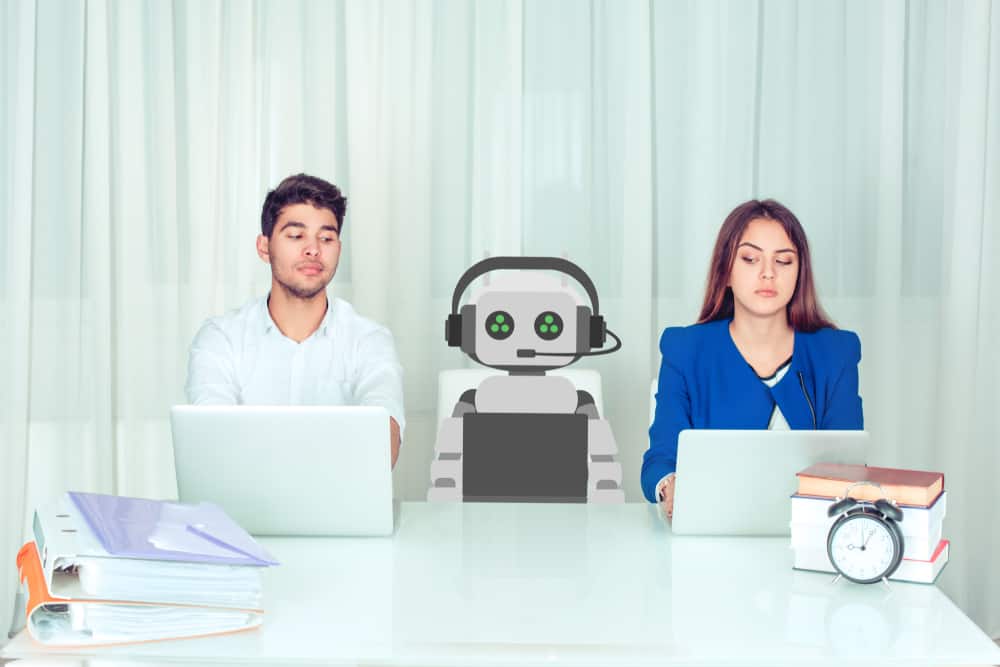 The idea that robots could replace human workers used to be the stuff of science fiction. For centuries, writers explored the concept with both wonder and fear. As technology evolves, though, artificial intelligence becomes less of a sci-fi trope and more of a tool. Robotics has changed many industries, especially in manufacturing, but even healthcare, automobiles, and other fields are seeing changes brought on by artificial intelligence and machines. Bots and AI chat assistants are growing in popularity too, and it’s worth exploring the ways in which they help – and hurt – the customer experience.
The idea that robots could replace human workers used to be the stuff of science fiction. For centuries, writers explored the concept with both wonder and fear. As technology evolves, though, artificial intelligence becomes less of a sci-fi trope and more of a tool. Robotics has changed many industries, especially in manufacturing, but even healthcare, automobiles, and other fields are seeing changes brought on by artificial intelligence and machines. Bots and AI chat assistants are growing in popularity too, and it’s worth exploring the ways in which they help – and hurt – the customer experience.
Chatbots and other AI tools can be immensely helpful for customer service. Automated phone systems have also become quite common. However, it is often a misconception by businesses that these tools should replace customer service agents. In their current form, automation and chatbots are great for solving common problems. By answering frequently asked questions and triggering automatic solutions to customer problems, these bots can ease the workload of humans. For example, a customer checking on the status of a delivery can easily hop on a chat with a bot and get the answers they need, or an automated attendant can get a caller routed to the correct department.
Recently, Google and Salesforce have even banded together in an attempt to improve customer experiences using AI.
However, technology has its limits. While a more customer-centric approach to AI may be possible in the future, for now, there’s just no replacing a helpful human. There’s a time and a place for bots, and knowing when to use them – and when to defer to real, live employees – can help you deliver better customer service.
The 80/20 Rule
Anyone working in customer service will tell you that frequently asked questions – ones about your hours, your policies, or your services – are repeated constantly. Even when the information is readily available on your website, customers will turn to your employees to ask about the details. And why wouldn’t they? When it comes to scouring a website for a single piece of information versus quickly pinging a customer service representative for the answer, the choice is obvious.
Unfortunately, though, these repetitions waste valuable employee time. While your customer service reps might not mind answering easy questions about return policies or operating hours, the customers waiting on hold to talk to a real human will grow increasingly disgruntled. The problem is pervasive: regardless of industry, you can expect about 80 percent of customer queries to be of the FAQ variety. This large proportion skews the hold time for the remaining 20 percent who need real, hands-on support from your team.
Working Smarter
Nobody likes to wait on hold, and the 20 percent that needs your focus will grow especially frustrated. Rather than tie up your phone lines answering those easy, frequently asked questions, consider offering a chatbot on your website or an automated greeting when a caller dials that allows them to push a couple buttons and get the answer they need via recording. These kinds of tools benefit one hundred percent of your customers. The 80 percent who just need to reset a password or ask about an order can instantly connect with the bot and have their problem solved quickly. This frees up time and phone lines for the 20 percent of callers who will need a bit more attention from a live support agent.
Unfortunately, though, chatbots aren’t a one-size fits all solution. For especially customer-centric industries, FAQs may not be all that frequent. A company may not be suited to AI technology or may find that chatbot tools are too limited in their abilities to actually solve problems. While AI is certainly becoming more advanced, it has a long way to go before completely replacing real people. In those cases, you’ll want to have a team of experienced customer support specialists to help find solutions.
Why Not Both?
Thankfully, you don’t have to take sides in the great human versus AI customer support battle. Both can bring real value to your company. Consider using customer service agents when:
- There’s a complex problem to be solved
When a particularly complex problem arises, the last thing a customer wants to deal with is a chatbot with limited functionality. And automated phone systems are often a point of irritation for callers that just want to speak with a living, breathing representative. A human can do a lot of things that AI cannot – apologizing, empathizing and turning a problem around for a customer is still beyond a robot’s capabilities. You’ll want a human around when a customer is facing a real challenge.
- You want to anticipate customer needs
It can be difficult for a chatbot to upsell. Even some humans struggle with anticipating the needs of others! An experienced customer service agent can listen for clues about a buyer’s journey and offer them additional products and services they might not have otherwise considered. While it’s one thing to have a bot alert people to a particular sale that’s going on, it’s much harder for AI to stay attuned to the actual needs of your customers.
- You’re eager to delight new customers or win back old ones
In especially competitive markets, it can be difficult to stand out from the crowd. Excellent customer support can make all the difference in earning customers who will come back again and again. It can also help ease tense situations when a dissatisfied customer wants to cancel or discontinue using your products.
The Human Advantage
There may come a time when AI offers the same degree of empathy, compassion, and concern a human can, but for now, that’s still the stuff of science fiction, so we have to rely on good old-fashioned interpersonal communication. Consider the ways in which your customers need you and determine which duties can be relegated to a robot and which to entrust to humans. While it may be an ongoing process, assigning the right kinds of tasks to computers and customer service agents is key to forging relationships with your customers!
Need more insight on why a customer service agent often tops artificial intelligence? Consider giving MAP Communications a try! Affordable, easy to use and staffed by friendly, highly-trained employees, MAP is the cure for the common call center. Call us today to learn more about our customer support call center services and start your free trial.
Related articles you might be interested in:
Automated vs Live Answering: Which is Best for Your Business?


